R Aquarii Is Known As A Symbiotic Star Made Up Of A White Dwarf–red Giant Binary Pairing. These Two
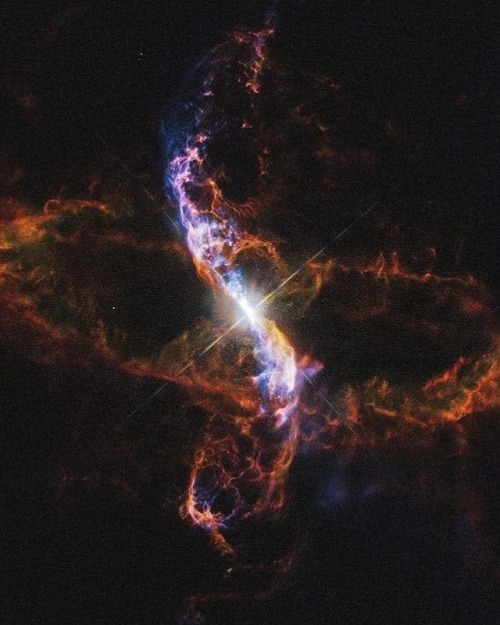
R Aquarii is known as a symbiotic star made up of a white dwarf–red giant binary pairing. These two stars are tied in orbit around one another with a period of around 44 years. The primary star is a variable red giant, meaning it changes temperature and undergoes drastic brightness fluctuations. The secondary star is a white dwarf that sucks in material from the red giant. Some of the extra material is sometimes ejected, forming the incredibly stunning nebula surrounding it.
(Credit: Hubble Space Telescope/Judy Schmidt)
More Posts from Xyhor-astronomy and Others




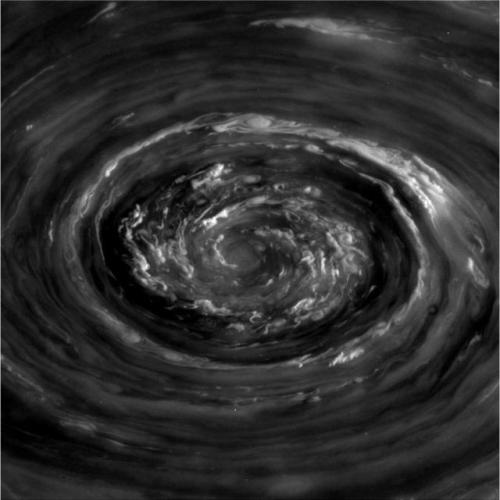
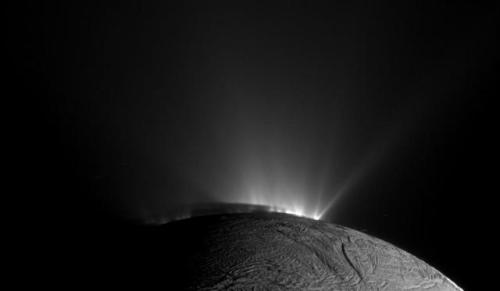

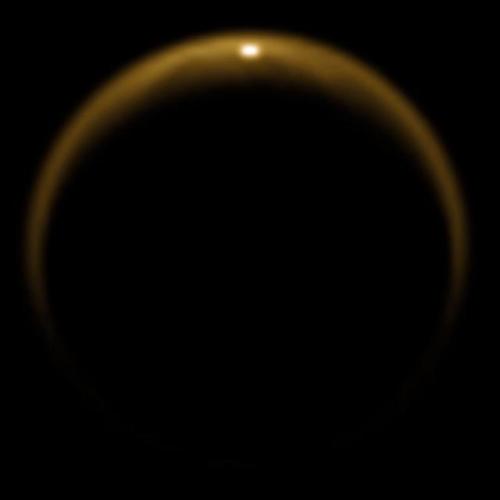

Tomorrow one of the most prolific and beloved spacecraft missions will come to an end when the Cassini spacecraft makes its final plunge into Saturn. After nearly 20 years in space and 13 years orbiting Saturn, the Cassini mission is close to running out of fuel. To prevent the craft from contaminating one of Saturn’s moons – which its mission revealed may harbor the ingredients for life – mission operators are instead sending it on a fatal dive into the gas giant.
Cassini has and will continue to provide a trove of scientific insights about Saturn and its environs. It has given us front-row seats to a storm that wrapped around the entire planet. It shed new light on Saturn’s spectacular hexagonal polar vortex and showed us the beauty of auroras on other planets. Cassini also showed us that Saturn’s moon Titan has stable hydrocarbon lakes at its surface, fed by methane rains and driven by processes unfamiliar to terrestrial ones. It also gave us paths for future exploration by documenting plumes of water ejected from Enceladus’ icebound oceans.
Cassini also holds a special place in my heart. It launched while I was in middle school, reached Jupiter while I was in college, and collected data throughout my postgraduate research career. It was an inspiration for my undergraduate spacecraft mission design projects, and it provided fun and exciting fluid dynamical discoveries throughout my time writing FYFD. It’s my favorite mission (sorry, Mars rovers, New Horizons, Dawn, and Juno!) and likely to remain so for years to come.
So thank you, Cassini, and many thanks to all the scientists, engineers, and operators who’ve worked on the mission during the decades from its conception to completion. You did a hell of a job. Godspeed, Cassini! (Photo credits: NASA/JPL)
P.S. - Tonight I’ll be helping kick off the Ig Nobel Prize ceremony. You can tune into the live webcast here. The ceremony officially starts at 6 PM Eastern time, but I recommend tuning in early, especially if you want to catch my full spiel. - Nicole
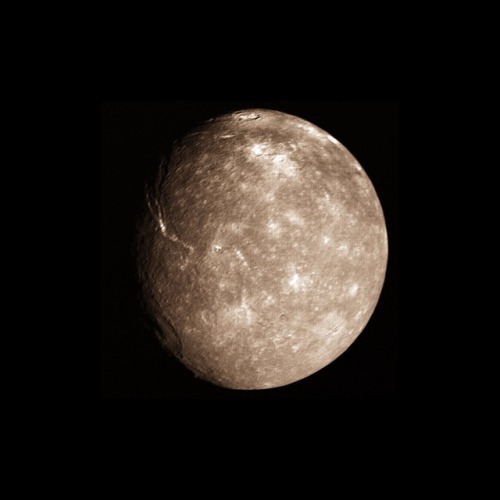

Two moons of Uranus: Titania and Oberon. Both moons were discovered by William Herschel in 1787.
Credit: NASA/JPL
How to Discover a Planet: A short step-by-step guide on how each of our planetary neighbors were originally discovered.
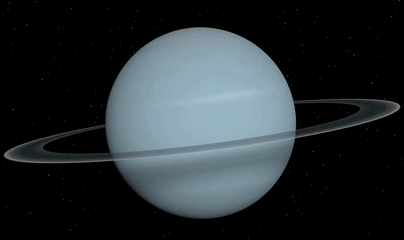
Planet Uranus ♅
Equatorial Diameter: 51.118 km
Satellites: 27
Notable satellites: Oberon, Titania, Miranda, Ariel & Umbriel
Orbit Distance: 2.870.658.186 km (19 AU)
Orbit Period: 84 Earth years
Surface Temperature: -220°C
Discovered Date: March 13th 1781
Discovered By: William Herschel
Image credit: Oscar Malet

While stuck in traffic in 1961, James Powell, a young researcher at Brookhaven National Laboratory came up with the idea of using powerful magnets to lift and propel massive passenger-carrying cars. Over the next seven years, he and his colleague Gordon Danby spent their spare time piecing together a concept. They obtained a patent for the breakthrough in 1968. Powell and Danby’s magnetic levitation, or maglev, technology must have seemed like magic back then, but it is now being used to move large trains at speeds up to 375 miles per hour!
Not content to rest on this sole accomplishment, the 84-year-old Powell now has grander ambitions for his maglev breakthrough. In 2001, he teamed up with George Maise, an aeronautical engineer and 23-year veteran of Brookhaven National Laboratory, to put forth an idea to revolutionize space launches: StarTram.
Continue Reading.

Located in the Large Magellanic Cloud, one of our neighbouring dwarf galaxies, this young globular-like star cluster is surrounded by a pattern of filamentary nebulosity that is thought to have been created during supernova blasts. It consists of a main globular cluster in the centre and a younger, smaller cluster, seen below and to the right, composed of extremely hot, blue stars and fainter, red T-Tauri stars. This wide variety of stars allows a thorough study of star formation processes.
Credit: ESA, NASA and Martino Romaniello (ESO, Germany)

South pole of Jupiter photographed by Voyager 1 on March 1, 1979
Credit: NASA / Voyager 1
Solar System: 10 Things to Know This Week
Need some space?
Here are 10 perspective-building images for your computer desktop and mobile device wallpaper.
These are all real images, sent very recently by our planetary missions throughout the solar system.
1. Our Sun

Warm up with this view from our Solar Dynamics Observatory showing active regions on the Sun in October 2017. They were observed in a wavelength of extreme ultraviolet light that reveals plasma heated to over a million degrees.
Downloads Desktop: 1280 x 800 | 1600 x 1200 | 1920 x 1200 Mobile: 1440 x 2560 | 1080 x 1920 | 750 x 1334
2. Jupiter Up-Close

This series of enhanced-color images shows Jupiter up close and personal, as our Juno spacecraft performed its eighth flyby of the gas giant planet on Sept. 1, 2017.
Downloads Desktop: 1280 x 800 | 1600 x 1200 | 1920 x 1200 Mobile: 1440 x 2560 | 1080 x 1920 | 750 x 1334
3. Saturn’s and Its Rings

With this mosaic from Oct. 28, 2016, our Cassini spacecraft captured one of its last looks at Saturn and its main rings from a distance.
Downloads Desktop: 1280 x 800 | 1600 x 1200 | 1920 x 1200 Mobile: 1440 x 2560 | 1080 x 1920 | 750 x 1334
4. Gale Crater on Mars

This look from our Curiosity Mars rover includes several geological layers in Gale crater to be examined by the mission, as well as the higher reaches of Mount Sharp beyond. The redder rocks of the foreground are part of the Murray formation. Pale gray rocks in the middle distance of the right half of the image are in the Clay Unit. A band between those terrains is “Vera Rubin Ridge,” where the rover is working currently. The view combines six images taken with the rover’s Mast Camera (Mastcam) on Jan. 24, 2017.
Downloads Desktop: 1280 x 800 | 1600 x 1200 | 1920 x 1200 Mobile: 1440 x 2560 | 1080 x 1920 | 750 x 1334
5. Sliver of Saturn

Cassini peers toward a sliver of Saturn’s sunlit atmosphere while the icy rings stretch across the foreground as a dark band on March 31, 2017. This view looks toward the unilluminated side of the rings from about 7 degrees below the ring plane.
Downloads Desktop: 1280 x 800 | 1600 x 1200 | 1920 x 1200 Mobile: 1440 x 2560 | 1080 x 1920 | 750 x 1334
6. Dwarf Planet Ceres

This image of the limb of dwarf planet Ceres shows a section of the northern hemisphere, as seen by our Dawn mission. Prominently featured is Occator Crater, home of Ceres’ intriguing “bright spots.” The latest research suggests that the bright material in this crater is comprised of salts left behind after a briny liquid emerged from below.
Downloads Desktop: 1280 x 800 | 1600 x 1200 | 1920 x 1200 Mobile: 1440 x 2560 | 1080 x 1920 | 750 x 1334
7. Martian Crater

This image from our Mars Reconnaissance Orbiter (MRO) shows a crater in the region with the most impressive known gully activity in Mars’ northern hemisphere. Gullies are active in the winter due to carbon dioxide frost, but northern winters are shorter and warmer than southern winters, so there is less frost and less gully activity.
Downloads Desktop: 1280 x 800 | 1600 x 1200 | 1920 x 1200 Mobile: 1440 x 2560 | 1080 x 1920 | 750 x 1334
8. Dynamic Storm on Jupiter

A dynamic storm at the southern edge of Jupiter’s northern polar region dominates this Jovian cloudscape, courtesy of Juno. This storm is a long-lived anticyclonic oval named North North Temperate Little Red Spot 1. Citizen scientists Gerald Eichstädt and Seán Doran processed this image using data from the JunoCam imager.
Downloads Desktop: 1280 x 800 | 1600 x 1200 | 1920 x 1200 Mobile: 1440 x 2560 | 1080 x 1920 | 750 x 1334
9. Rings Beyond Saturn’s Sunlit Horizon

This false-color view from the Cassini spacecraft gazes toward the rings beyond Saturn’s sunlit horizon. Along the limb (the planet’s edge) at left can be seen a thin, detached haze.
Downloads Desktop: 1280 x 800 | 1600 x 1200 | 1920 x 1200 Mobile: 1440 x 2560 | 1080 x 1920 | 750 x 1334
10. Saturn’s Ocean-Bearing Moon Enceladus

Saturn’s active, ocean-bearing moon Enceladus sinks behind the giant planet in a farewell portrait from Cassini. This view of Enceladus was taken by NASA’s Cassini spacecraft on Sept. 13, 2017. It is among the last images Cassini sent back before its mission came to an end on Sept. 15, after nearly 20 years in space.
Downloads Desktop: 1280 x 800 | 1600 x 1200 | 1920 x 1200 Mobile: 1440 x 2560 | 1080 x 1920 | 750 x 1334
Applying Wallpaper: 1. Click on the screen resolution you would like to use. 2. Right-click on the image (control-click on a Mac) and select the option ‘Set the Background’ or 'Set as Wallpaper’ (or similar).
Places to look for more of our pictures include solarsystem.nasa.gov/galleries, images.nasa.gov and www.jpl.nasa.gov/spaceimages.
Make sure to follow us on Tumblr for your regular dose of space: http://nasa.tumblr.com
Resupply Mission Brings Mealworms and Mustard Seeds to Space Station
Orbital ATK will launch its Cygnus cargo spacecraft to the International Space Station on November 11, 2017 from Wallops Flight Facility in Virginia. It will be packed with cargo and scientific experiments for the six humans currently living and working on the orbiting laboratory.

The cargo spacecraft is named the S.S. Gene Cernan after former NASA astronaut Eugene Cernan, who is the last man to have walked on the moon.

Here are some of the really neat science and research experiments that will be delivered to the station:
What’s Microgravity Got to do with Bacterial Antibiotics?
Antibiotic resistance could pose a danger to astronauts, especially since microgravity has been shown to weaken human immune response. E. coli AntiMicrobial Satellite (EcAMSat) will study microgravity’s effect on bacterial antibiotic resistance.

Results from this experiment could help us determine appropriate antibiotic dosages to protect astronaut health during long-duration human spaceflight and help us understand how antibiotic effectiveness may change as a function of stress on Earth.
Laser Beams…Not on Sharks…But on a CubeSat
Traditional laser communication systems use transmitters that are far too large for small spacecraft. The Optical Communication Sensor Demonstration (OCSD) tests the functionality of laser-based communications using CubeSats that provide a compact version of the technology.

Results from OCSD could lead to improved GPS and other satellite networks on Earth and a better understanding of laser communication between small satellites in low-Earth orbit.
This Hybrid Solar Antenna Could Make Space Communication Even Better
As space exploration increases, so will the need for improved power and communication technologies. The Integrated Solar Array and Reflectarray Antenna (ISARA), a hybrid power and communication solar antenna that can send and receive messages, tests the use of this technology in CubeSat-based environmental monitoring.

ISARA may provide a solution for sending and receiving information to and from faraway destinations, both on Earth and in space.
More Plants in Space!
Ready for a mouthful…The Biological Nitrogen Fixation in Microgravity via Rhizobium-Legume Symbiosis…aka the Biological Nitrogen Fixation experiment, will examine how low-gravity conditions affect the nitrogen fixation process of the Microclover legume (a plant in the pea family). Nitrogen fixation is a process where nitrogen in the atmosphere is converted into ammonia. This crucial element of any ecosystem is also a natural fertilizer that is necessary for most types of plant growth.

This experiment could tell us about the space viability of the legume’s ability to use and recycle nutrients and give researchers a better understanding of this plant’s potential uses on Earth.
What Happens When Mealworms Live in Space?
Mealworms are high in nutrients and one of the most popular sources of alternative protein in developing countries. The Effects of Microgravity on the Life Cycle of Tenebrio Molitor (Tenebrio Molitor) investigation studies how the microgravity environment affects the mealworm life cycle.

In addition to alternative protein research, this investigation will provide information about animal growth under unique conditions.
Mustard Seeds in Microgravity
The Life Cycle of Arabidopsis thaliana in Microgravity experiment studies the formation and functionality of the Arabidopsis thaliana, a mustard plant with a genome that is fully mapped, in microgravity conditions.

The results from this investigation could contribute to an understanding of plant and crop growth in space.
Follow @ISS_Research on Twitter for more information about the science happening on space station.
Watch the launch live HERE on Nov. 11, liftoff is scheduled for 7:37 a.m. EDT!
Make sure to follow us on Tumblr for your regular dose of space: http://nasa.tumblr.com.
-
 marsblackmon85 liked this · 1 year ago
marsblackmon85 liked this · 1 year ago -
 vistastudios liked this · 2 years ago
vistastudios liked this · 2 years ago -
 astronofeminist reblogged this · 2 years ago
astronofeminist reblogged this · 2 years ago -
 mysticalluminarychild liked this · 3 years ago
mysticalluminarychild liked this · 3 years ago -
 satedanfire reblogged this · 3 years ago
satedanfire reblogged this · 3 years ago -
 satedanfire liked this · 3 years ago
satedanfire liked this · 3 years ago -
 m00ndingochan reblogged this · 3 years ago
m00ndingochan reblogged this · 3 years ago -
 m00ndingochan liked this · 3 years ago
m00ndingochan liked this · 3 years ago -
 sicu-me liked this · 3 years ago
sicu-me liked this · 3 years ago -
 bigcheets liked this · 4 years ago
bigcheets liked this · 4 years ago -
 gotosleepshivam liked this · 4 years ago
gotosleepshivam liked this · 4 years ago -
 unlethargic liked this · 4 years ago
unlethargic liked this · 4 years ago -
 marialeecollectorfan reblogged this · 4 years ago
marialeecollectorfan reblogged this · 4 years ago -
 let-mee-live reblogged this · 4 years ago
let-mee-live reblogged this · 4 years ago -
 wachsurfer2018 liked this · 4 years ago
wachsurfer2018 liked this · 4 years ago -
 onwardsandfourwords reblogged this · 4 years ago
onwardsandfourwords reblogged this · 4 years ago -
 llloveyours liked this · 4 years ago
llloveyours liked this · 4 years ago -
 phoenyxnightbyrd liked this · 4 years ago
phoenyxnightbyrd liked this · 4 years ago -
 phoenyxnightbyrd reblogged this · 4 years ago
phoenyxnightbyrd reblogged this · 4 years ago -
 liquidink21 reblogged this · 4 years ago
liquidink21 reblogged this · 4 years ago -
 butchtigerboy liked this · 4 years ago
butchtigerboy liked this · 4 years ago -
 michiganmoon reblogged this · 4 years ago
michiganmoon reblogged this · 4 years ago -
 michiganmoon liked this · 4 years ago
michiganmoon liked this · 4 years ago -
 superfandomstrash liked this · 4 years ago
superfandomstrash liked this · 4 years ago -
 wibblywobblygenderywendery reblogged this · 4 years ago
wibblywobblygenderywendery reblogged this · 4 years ago -
 atemu-remus reblogged this · 4 years ago
atemu-remus reblogged this · 4 years ago -
 atemu-remus liked this · 4 years ago
atemu-remus liked this · 4 years ago -
 the-glorious-void reblogged this · 4 years ago
the-glorious-void reblogged this · 4 years ago -
 sunkssedd reblogged this · 4 years ago
sunkssedd reblogged this · 4 years ago -
 wibblywobblygenderywendery liked this · 4 years ago
wibblywobblygenderywendery liked this · 4 years ago -
 sunflower-butch reblogged this · 4 years ago
sunflower-butch reblogged this · 4 years ago -
 sunflower-butch liked this · 4 years ago
sunflower-butch liked this · 4 years ago -
 meow-chiato reblogged this · 4 years ago
meow-chiato reblogged this · 4 years ago -
 thedykeinthemoon reblogged this · 4 years ago
thedykeinthemoon reblogged this · 4 years ago -
 thedykeinthemoon liked this · 4 years ago
thedykeinthemoon liked this · 4 years ago -
 virginiasdaughter reblogged this · 4 years ago
virginiasdaughter reblogged this · 4 years ago -
 snowhitenastasya reblogged this · 4 years ago
snowhitenastasya reblogged this · 4 years ago -
 lux-tenebrae liked this · 5 years ago
lux-tenebrae liked this · 5 years ago -
 domesticame reblogged this · 5 years ago
domesticame reblogged this · 5 years ago -
 paulcirris liked this · 5 years ago
paulcirris liked this · 5 years ago
For more content, Click Here and experience this XYHor in its entirety!Space...the Final Frontier. Let's boldly go where few have gone before with XYHor: Space: Astronomy & Spacefaring: the collection of the latest finds and science behind exploring our solar system, how we'll get there and what we need to be prepared for!
128 posts